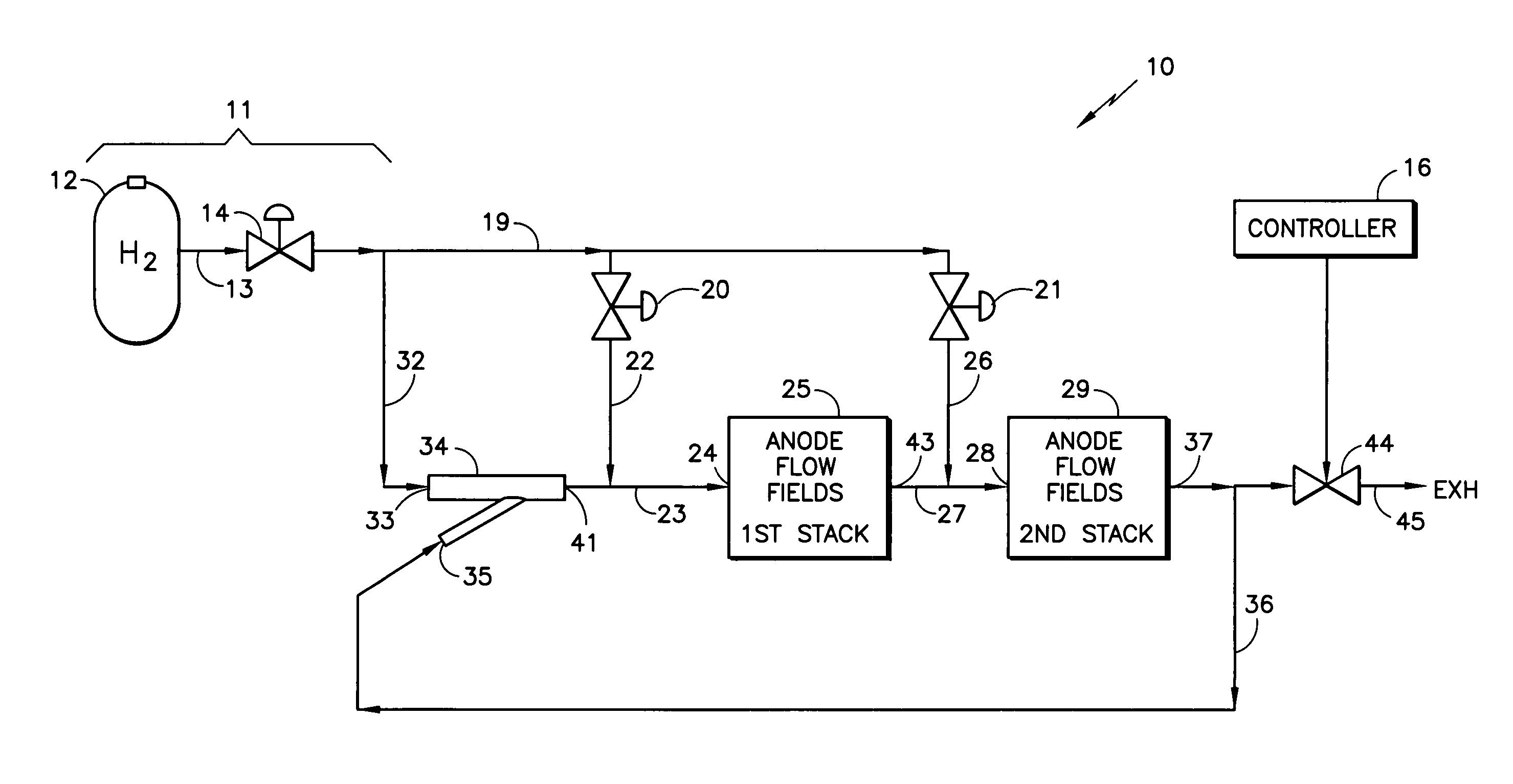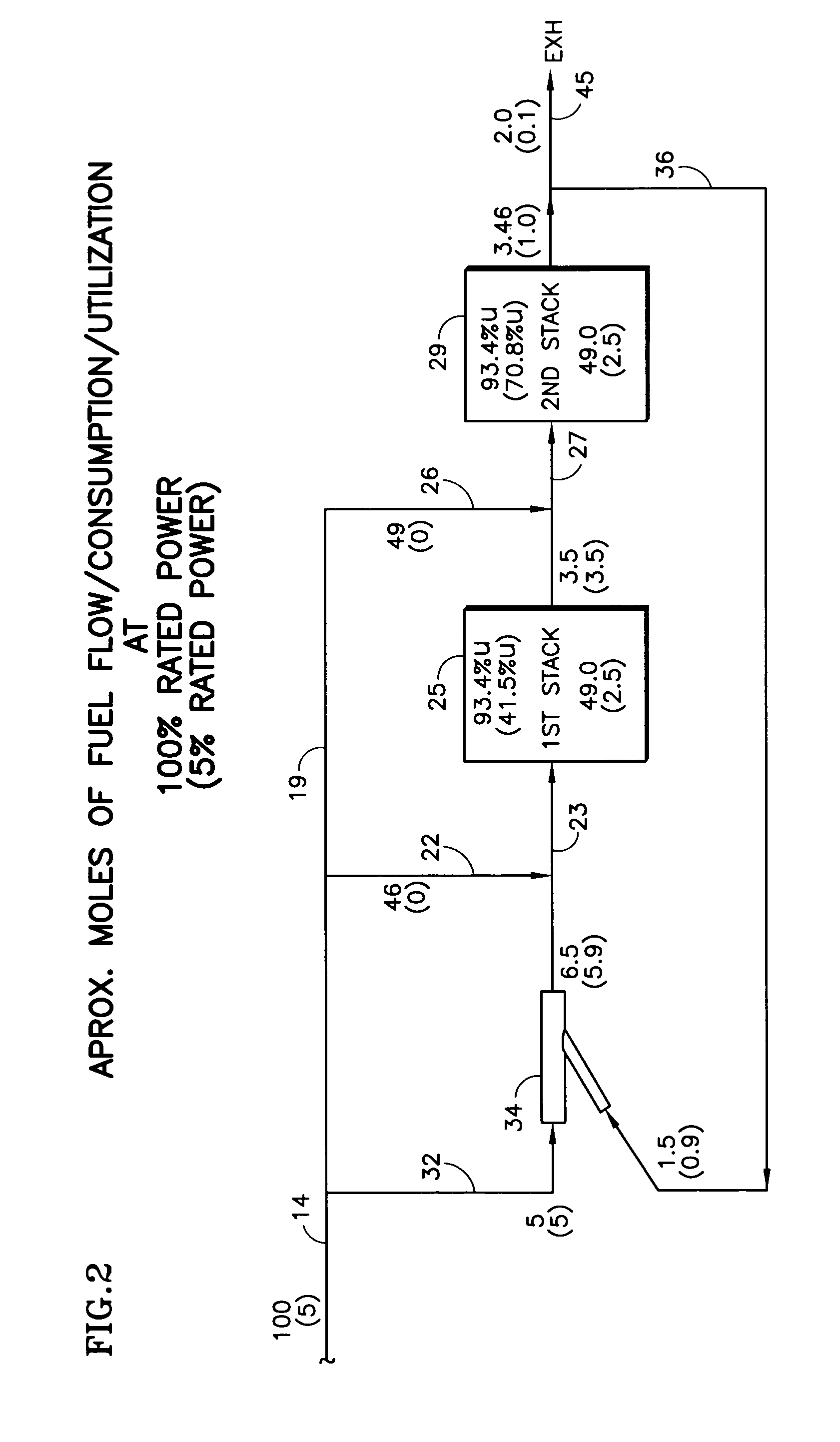Fuel cell minimum fuel recycle with maximum fuel utilization
a fuel cell and maximum fuel utilization technology, applied in the field of fuel cells, can solve the problems of fuel maldistribution, fuel maldistribution, and the inability to meet the instantaneous load of the fuel cell power plant, and achieve the effect of high fuel utilization, high reliability of the fuel cell power plant, and elimination of stack-to-stack fuel maldistribution
- Summary
- Abstract
- Description
- Claims
- Application Information
AI Technical Summary
Benefits of technology
Problems solved by technology
Method used
Image
Examples
Embodiment Construction
[0019]Referring to FIG. 1, hydrogen is provided to a fuel cell power plant 10, only a portion of which is shown, from a source 11 that receives hydrogen from a supply 12, which may be a conventional reformer or a tank of pressurized hydrogen, and passes it through a conduit 13 to a pressure regulator 14. Fuel is delivered from the source 11 over a conduit 19 to a pair of pressure regulators 20, 21. Fuel from the pressure regulator 20 passes over conduits 22, 23 to an inlet 24 of the anode flow fields of a first fuel cell stack 25. Fuel from the pressure regulator 21 passes through conduits 26, 27 to an inlet 28 of the anode flow fields of a second fuel cell stack 29.
[0020]According to one aspect of the invention, a fixed amount of fuel is brought from the source 11 over a conduit 32 to a primary inlet 33 of an ejector 34, the secondary inlet 35 of which is connected by a conduit 36 to an outlet 37 of the anode flow fields of the second stack 29, to drive fuel recycle gas through the...
PUM
| Property | Measurement | Unit |
|---|---|---|
| time | aaaaa | aaaaa |
| power | aaaaa | aaaaa |
| power output | aaaaa | aaaaa |
Abstract
Description
Claims
Application Information
 Login to View More
Login to View More - R&D
- Intellectual Property
- Life Sciences
- Materials
- Tech Scout
- Unparalleled Data Quality
- Higher Quality Content
- 60% Fewer Hallucinations
Browse by: Latest US Patents, China's latest patents, Technical Efficacy Thesaurus, Application Domain, Technology Topic, Popular Technical Reports.
© 2025 PatSnap. All rights reserved.Legal|Privacy policy|Modern Slavery Act Transparency Statement|Sitemap|About US| Contact US: help@patsnap.com



